
Love these multi-colored Enzo Mari chairs, the same version that we have here in the shop.

Love these multi-colored Enzo Mari chairs, the same version that we have here in the shop.

Not a non-profit, not started through the largess of some grant, Beyond Repair looks – and attempts to make transparent – the varying economies which can support a critical socially engaged art project within the marketplace.
One way we’ve been keeping the doors open is by doing print service work for people. For instance, a karaoke DJ came in not long ago and asked us to print his “karaoke bible” for him – done! We’ve printed wedding invitations for one the bartenders over at Eastlake Brewery next door to us, bound chap books for local artists, and are currently working on printing a book for a local children’s reading specialist organization.
If you have a small print project that you are looking to do, think about Beyond Repair doing the job for you. Not only are we fairly priced for artists, activists, and everyone else, your dollars go towards keeping a complicated, weird, political art project in plain sight.

In the 1920s Otto Nuerath, with the design assistance of Gerd Arntz, developed a system of global graphics called Isotypes, a visual language that would allow all peoples to recognize and negotiate space no matter their language of origin. Post WWI, in an increasingly “global,” and seemingly on the move towards humanist, Europe this sort of concept seemed more than appropriate.
I can’t help but wonder, what would a version, both conceptual and well as philosophical, of Nuerath and Arntz’s designs look like were they developed strictly for neighborhood purposes, as well as for discrete moments, and not simply all time? Could a Graphic User Interface work block by block, as a means for neighborhood conversation and recognition?
It’s easy to think sites like water treatment plants, incinerators, heavy industry “have to go somewhere,” but stop for a moment and look around you… are they within view of where you call home? Do the effects of pollutants, high traffic and smog effect your health and well-being? Unless you live in an area where many residents are people of color or, in tandem, are experiencing the effects of poverty, the answer is likely no. And inasmuch, it is vital that we all ask why.
Why are sites like the Roof Depot Water Treatment facility, which the MPLS city council is forcefully pushing through to open in Phillips, again, almost always planned for areas where the great majority of residents are people of color, are experiencing the effects of poverty? Another way to ask this question; why are a greater percentage of children who grow up in poverty, or children of color, disproportionately effected by childhood asthma? If your answer is “that’s just how they are” then you need to sit down again and give that question some more thought.
Obviously, no one is born with asthma. The dots are simple to connect. One’s environment causes the symptoms of asthma. And so, what is the environment of many people of color living with the effects of poverty? It’s an environment that is habited by infrastructure that looks very much like the Roof Depot site, or the incinerator just outside of N. MPLS. Asthma, and other ailments, are often by products of both the environment and of poverty or proximity to those who are experiencing poverty.
This is something that, if we care about it, can easily be addressed. So, again, we need to ask such questions as, “why are a greater percentage of children who grow up in poverty, or children of color, disproportionately effected by childhood asthma?” The answer is, because we let it happen.
Calling all 9th Ward neighbors (that’s Powderhorn, Central, Phillips…) and Twin Cities residents interested in our neighborhood: Beyond Repair has started a Publication Residency called 9W / PRP. If you are interested in forming a public around ideas and issues within the 9th Ward, reach out to us so we can help you realize your ideas through the tools and processes available within the shop.

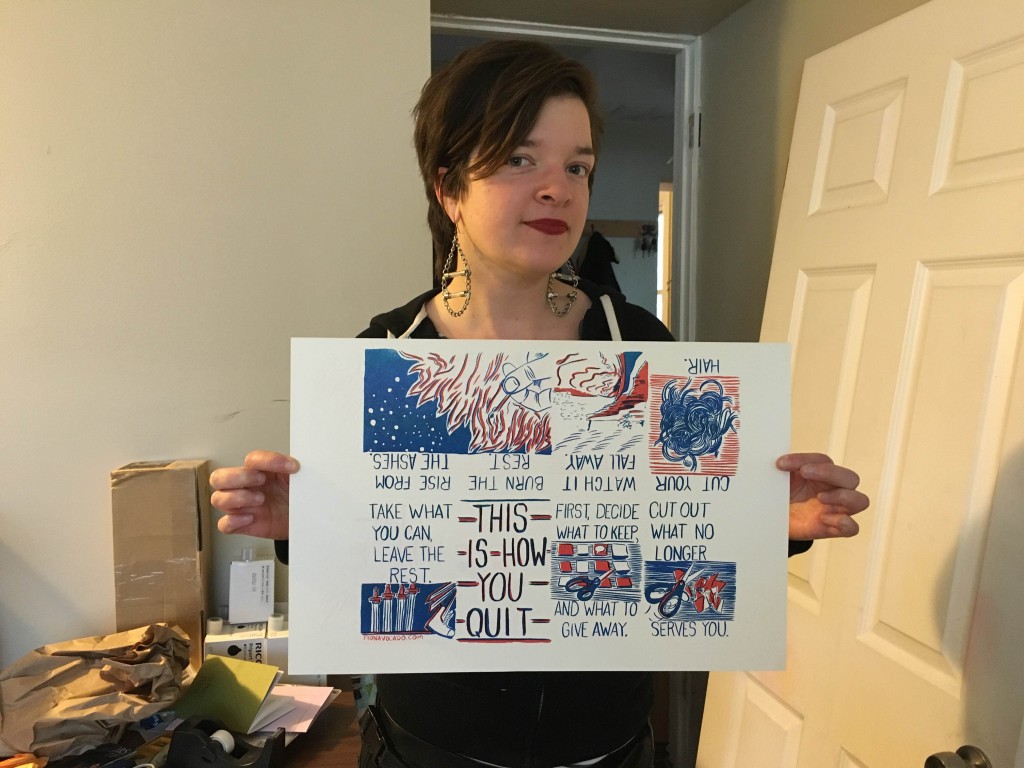
Over the last few weeks Fiona, our first resident within the 9th Ward Publication Residency Program (9W / PRP) has been stopping by the shop, thinking through ideas and projects that she’d like to work on this month. Yesterday we finished production on This is How You Quit, a two color mini-comic of Fiona’s inspired by quitting her job and giving in to life. We fully support her desire to “give up.”

Fiona, as with all future 9WPRP residents lives in the neighborhood. Actually, just a block away from Beyond Repair to be exact. A self-described “artist, writer, media maker, educator, and agitator,” Fiona has produced many comics and illustrations, often taking aspects of her daily life as a subtle entrance point to engage larger social issues.


Our first Public-Maker in Residence, Fiona Avocado made these amazing mini-comics in the shop the other day, This is How You Quit. We fully support the Quitting Movement. Charter members over here, we are.
Eric Holt-Giménez begins his talk on food production / access and the “vanishing public sphere” by stating, simply “The problem isn’t scarcity.”
We know this… even if it isn’t something that immediately comes to the mind of all people. We know, whether it is access to food, land, economic security, power it isn’t simply that there is not enough, but more so that too few want too much.
The Food Enough? group has been meeting at Beyond Repair every other Sunday for the last few weeks to consider these sorts of ideas through the broad lens of “neighborhood health.”
We’ll be meeting now and into the future. Stop over and join the conversation.
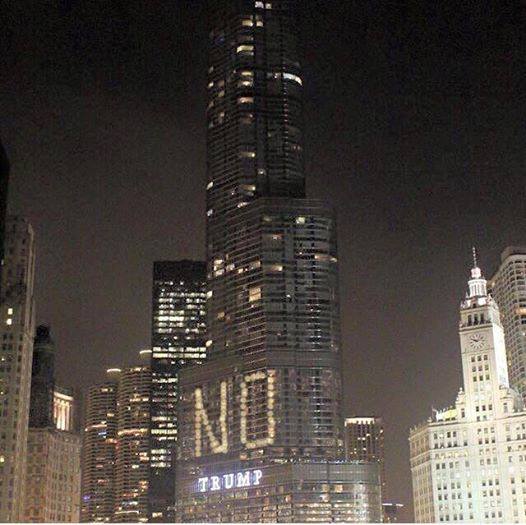
It’s really easy to think that there are no tools at our disposal to speak truth to power. Sometimes we remember the light switch is right at our fingertips.
The other night workers in one of Donald Trump’s Chicago buildings knew they had the power to shine a light on Trump’s racist, violent arrogance. (man… so many puns available with this one.)
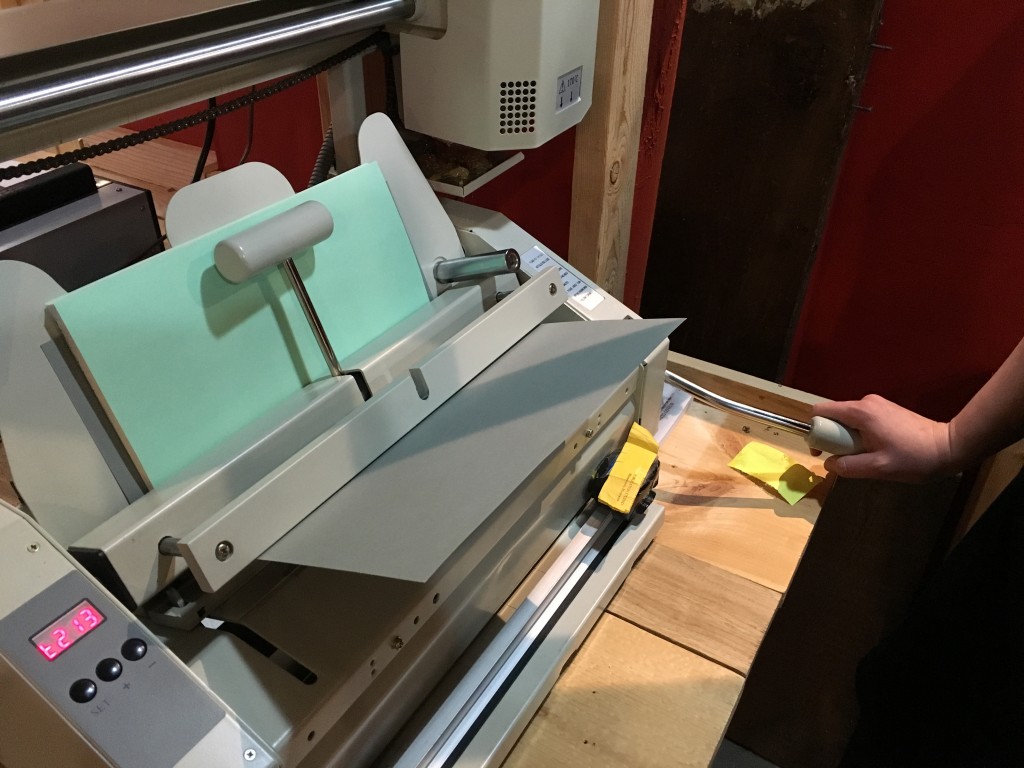
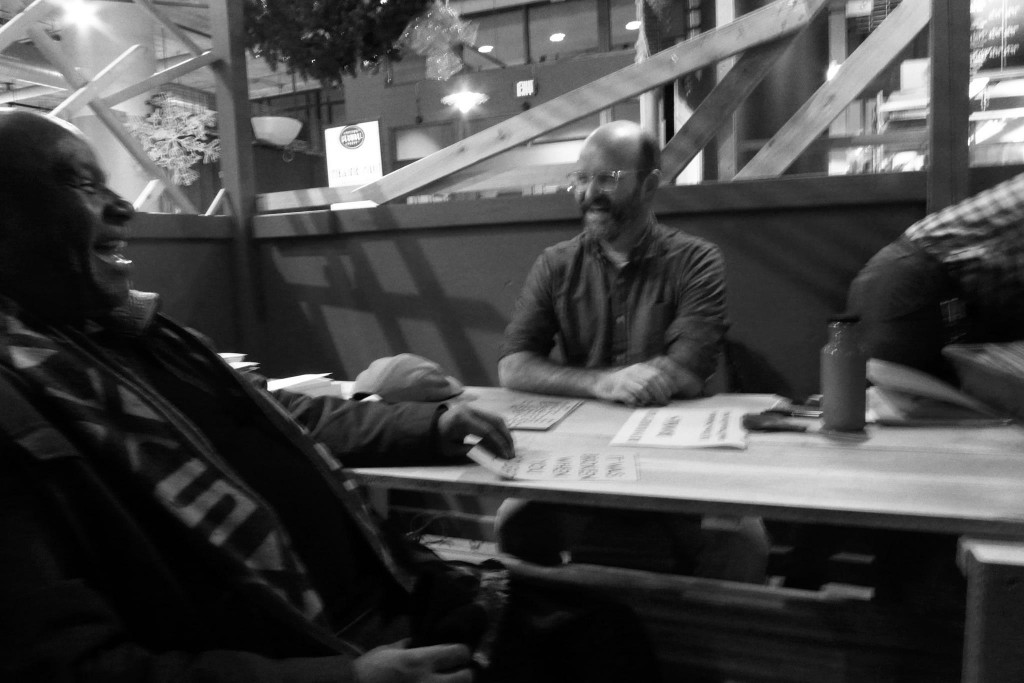

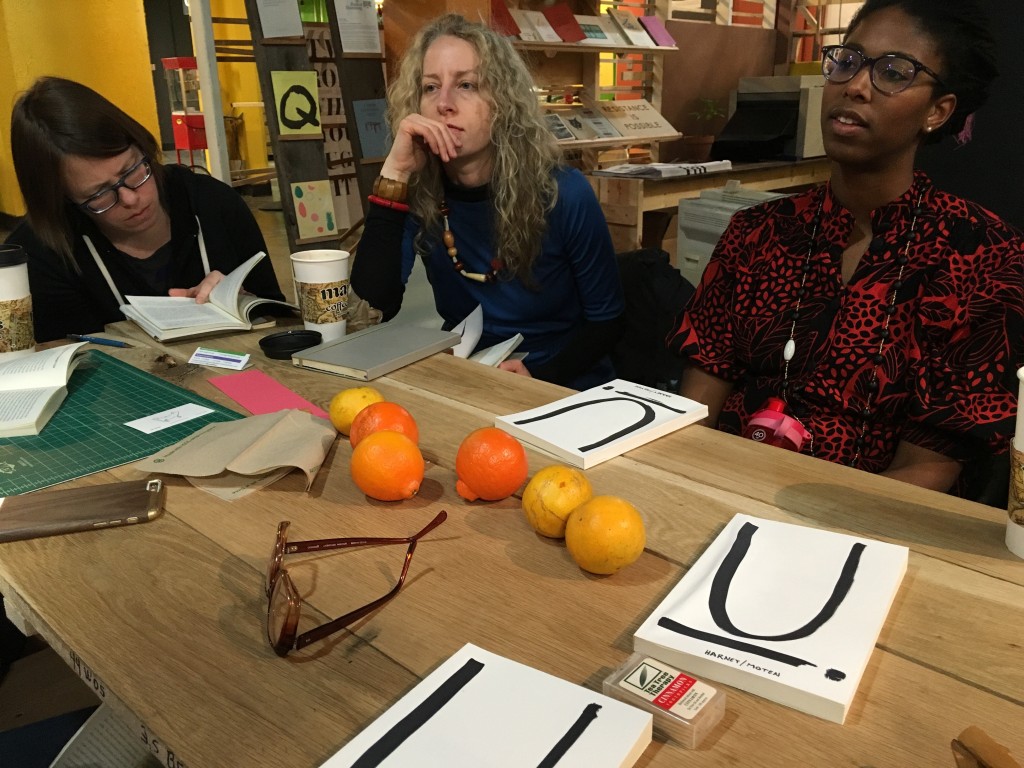
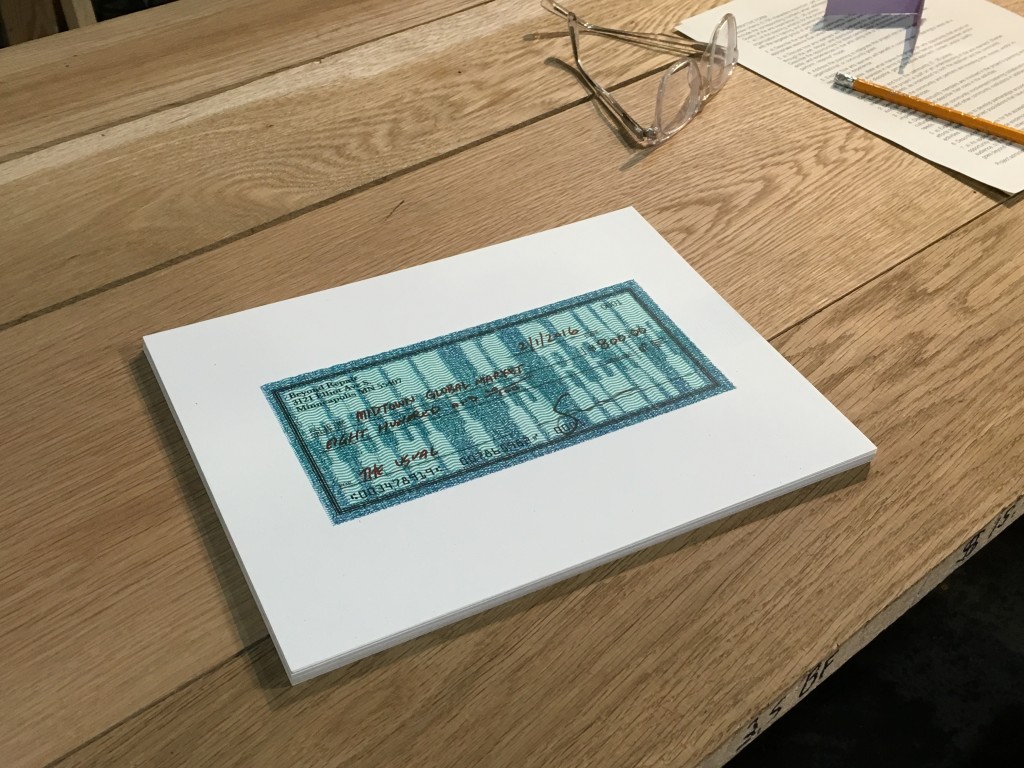

“Thanks for participating in “What’s Your Beauty and Will You Share it with the World”! I’m hoping you’ll write a few sentences about your object and its beauty. Even better if you include something about the neighborhood, e.g. if you have a special spot of beauty you look forward to walking by, how you’ve seen the neighborhood change, story or rumor…. I ran the Shoebox Gallery on the corner of Chicago and Lake for eleven years and am planning a book about it. Your input would be a great help towards a portrait of the neighborhood!
Sincerely,
Sean Smuda”
Session #3 of , Sean Smuda’s 9th Ward portrait project again will set up shop within Beyond Repair this Saturday, as it will each Saturday for the time being. Join us accompanied by an object you find beautiful. Sean, in time, will be compiling his portraits, and his questions about the changing tenor of Lake St. over the last decade, into a book to be published through Beyond Repair.